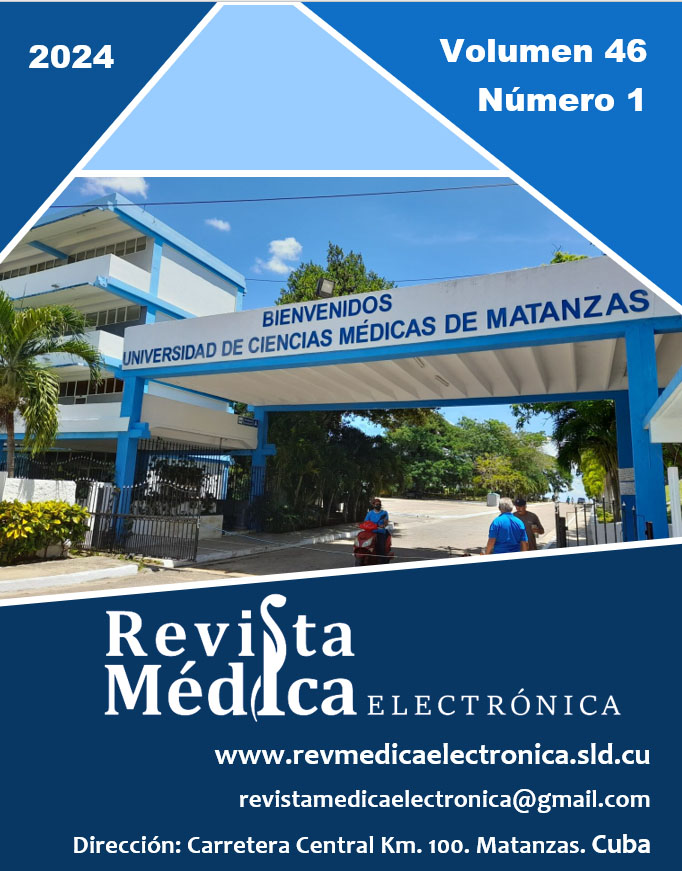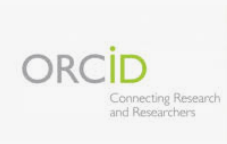Solutions based on three-dimensional technologies for the practice and teaching of biomedical sciences
Keywords:
additive manufacturing, three-dimensional printing, medicine, radiology, imaging, DICOMAbstract
Introduction: Three-dimensional printing is one of the technologies that promote change at an economic and social level, and one of the fundamental elements of industry 4.0. It has enormous potential for the future of medicine, establishing itself as a new paradigm. Despite its advantages, its use in our environment is incipient.
Objective: To design and develop solutions based on three-dimensional technologies for the teaching and practice of biomedical sciences.
Materials and methods: A technological development investigation was carried out between the Center for Assisted and Sustainable Manufacturing of the University of Matanzas and Matanzas University of Medical Sciences, between September 2019 and July 2022. The designs and fabrications were made from the acquisition of computed tomography images, or from a surface scanner, which were then processed, converted into Standard Tessellation Language format, printed, and post-processed. Virtual designs were developed using computer-aided design software.
Results: Various solutions were developed including prototypes: biomodels for craniosynostosis repair and anatomical figures, custom cranial prosthesis mold, hand prosthesis, O2 line splitters, tissue scaffolds, syringe gun, face shields, breast prosthesis; autologous restoration mold and tissue expander.
Conclusions: In all areas of application of this technology in medicine―except the printing of medicines, in the current context―, it is feasible to obtain solutions in the territory of Matanzas. It is therefore imperative that managers and the medical community in general, begin to acquire awareness, knowledge, and experience to ensure the optimal use of this technology.Downloads
References
2. Marr B. Tech trends in practice. The 25 technologies that are driving the 4th industrial revolution. Cornwall: John Wiley & Sons Ltd; 2020.
3. Parthasarathy J, Krishnamurthy R, Ostendorf A, et al. 3D printing with MRI in pediatric applications. J Magn Reson Imaging. 2020;51(6):1641-58. DOI: 10.1002/jmri.26870.
4. Fan D, Li Y, Wang X, et al. Progressive 3D printing technology and its application in medical materials. Front Pharmacol. 2020;11:122. DOI: 10.3389/fphar.2020.00122.
5. Mitsouras D, Liacouras P, Imanzadeh A, et al. Medical 3D printing for the radiologist. RadioGraphics. 2015;35(7):1965-88. DOI: 10.1148/rg.2015140320.
6. Thomas DJ, Singh D. 3D printing for developing patient specific cosmetic prosthetics at the point of care. Int J Surg. 2020;80:241-2. DOI: 10.1016/j.ijsu.2020.04.023.
7. Rybicki FJ. Medical 3D printing and the physician-artist. Lancet. 2018;391(10121):651-2. DOI: 10.1016/S0140-6736(18)30212-5.
8. Tejo Otero A, Buj Corral I, Fenollosa Arte F. 3D printing in medicine for preoperative surgical planning: A review. Ann Biomed Eng. 2020;48(2):536-55. DOI: 10.1007/s10439-019-02411-0.
9. Hummelink S, Verhulst AC, Maal TJJ, et al. Applications and limitations of using patient-specific 3D printed molds in autologous breast reconstruction. Eur J Plast Surg. 2018;41(5):571-6. DOI: 10.1007/s00238-018-1430-3.
10. Padasak Z. Top 10 advantages and disadvantages of additive manufacturing [Internet]. St. Marys, PA: Alpha Precision Group; 2022 [cited 12/22/22]. Available from: https://www.alphaprecisionpm.com/blog/top-10-advantages-and-disadvantages-of-using-additive-manufacturing
11. Squelch A. 3D printing and medical imaging. J Med Radiat Sci. 2018;65(3):171-2. DOI: 10.1002/jmrs.300.
12. Kim GB, Lee S, Kim H, et al. Three-dimensional printing: Basic principles and applications in medicine and radiology. Korean J Radiol. 2016;17(2):182-97. DOI: 10.3348/kjr.2016.17.2.182.
13. Gando S, Labarca G, Majid A, et al. Aplicaciones de la impresión 3D en la vía aérea central. Rev Med Chile [Internet]. 2019 [cited 08/27/2023];147(10):1315-22. Available from: http://www.scielo.cl/scielo.php?script=sci_arttext&pid=S0034-98872019001001315&lng=es
14. Ernst A, Wahidi MM, Read CA, et al. Adult bronchoscopy training: Current state and suggestions for the future: CHEST expert panel report. Chest. 2015;148(2):321-32. DOI: 10.1378/chest.14-0678.
15. De Frutos Marcos D, Ortega Martínez R, Zazpe Cenoz I, et al. Utilidad de la impresión 3D en la cirugía de craneosinostosis. An Pediatr (Engl Ed). 2022;97(1):69-71. DOI: 10.1016/j.anpedi.2021.05.022.
16. Pöppe JP, Spendel M, Schwartz C, et al. The “springform” technique in cranioplasty: custom made 3D-printed templates for intraoperative modelling of polymethylmethacrylate cranial implants. Acta Neurochir (Wien). 2022;164(3):679-88. DOI: 10.1007/s00701-021-05077-7.
17. López-López EE, Martínez-Méndez R, Vilchis González AH. Diseño de una prótesis de mano para uso en teclados con interfaz sEMG. ReCIBE [Internet]. 2019 [cited 06/10/2023];8(1):47-69. Available from: https://www.redalyc.org/journal/5122/512259512003/html/
18. Gómez Blázquez G. Proyecto de diseño de una prótesis a partir de fabricación aditiva (impresión 3d) [Internet]. Barcelona: Polytechnic University of Catalonia; 2019 [cited 12/22/22]. Available from: https://upcommons.upc.edu/bitstream/handle/2117/173993/MEMORIA%20%20-%20TFM%20Guillermo%20G%C3%B3mez%20Bl%C3%A1zquez.pdf
19. Acosta Calvo SL. Diseño y fabricación de una prótesis mecánica de mano [Internet]. Matanzas: University of Matanzas; 2021 [cited 12/22/22]. Available from: https://rein.umcc.cu/handle/123456789/1861
20. Cutipa Puma DR, Coaguila Quispe CG, Yanyachi PR. A low-cost robotic hand prosthesis with apparent haptic sense controlled by electroencephalographic signals. HardwareX. 2023;14:e00439. DOI: 10.1016/j.ohx.2023.e00439.
21. González González A, Rivas Santana M, Zambrano Robledo PC, et al. Thermal and morphological characterization of 3D-printed PLA scaffolds for biomedical applications. MRS Adv. 2022;7(35):1206-11. DOI: 10.1557/s43580-022-00454-5.
22. González González A, Rivas Santana M, Quiza Sardiñas R, et al. Modelación de andamios porosos basados en las estructuras triplemente periódicas P y G. Orange Journal. 2021;3(5):30-41. DOI: 10.46502/issn.2710-995X/2021.5.04.
23. Mayer HF. The use of a 3D simulator software and 3D printed biomodels to aid autologous breast reconstruction. Aesth Plast Surg. 2020;44(5):1396-402. DOI: 10.1007/s00266-020-01733-y.
Published
How to Cite
Issue
Section
License
All content published in this journal is Open Access, distributed under the terms of the CC BY-NC 4.0 License.
It allows:
- Copy and redistribute published material in any medium or format.
- Adapt the content.
This will be done under the following terms:
- Attribute the authors' credits and indicate whether changes were made, in which case it must be in a reasonable way.
- Non-commercial use.
- Recognize the journal where it is published.
The copyrights of each article are maintained, without restrictions.






